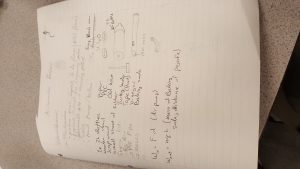Braeden and Anton – Flamethrower
History:
The flamethrower has strong origins in two places. The Byzantine Empire (Eastern Roman Empire) and China. In the Byzantine Empire, flamethrowers came in the form of “Greek Fire”. They would launch the Greek Fire through hand pumped flamethrowers on their naval ships. The flamethrower is said to be invented by Kallinikos of Heliopolis in about the year 673 AD. Later, in ancient China, the Pen Huo Qi was a Chinese piston flamethrower that utilized substances like gasoline. It was invented around the year 917 AD. The flamethrower was invented to fight enemies, especially at sea since the “Greek fire” or “fierce fire oil” they would use was not affected by water, making it the most effective and dangerous weapon to use at sea, where most battles between nations were fought anyways. The short-term implications of flamethrowers are kind of obvious, people died. With a weapon as destructive and ahead of its time as the flamethrower, some serious damage could be done to entire armies of people at a time. As for the long-term implications, the flamethrower was later modernized and revolutionized by Richard Fiedler for use in World War 1. It was later even more modernized and dangerous in time for World War 2. Now in modern times, they can still be seen in use in warfare, and it is actually legal to own a flamethrower in the USA.
Physics:
There were a few physics equations we’ve learned that we could apply to this project. First of all we could measure the work. We’d simply have to measure the force we’re applying and then measure the distance it travels since W = F x d. Next, we could find the acceleration of the baking soda, by dividing the change in velocity of the baking soda by the change in time that occurs since a = v/t. Finally we could also find the momentum by multiplying the velocity and the mass since p = mv. Another physics related aspect is that we had to reduce the coefficient of friction on the wooden pump piece since it had to move smoothly through the tank.
Design and Building Process:

At this point we started planning out how we were going to make the flamethrower and what materials we needed to make it.
Citations:
https://en.wikipedia.org/wiki/Flamethrower
https://science.howstuffworks.com/flamethrower1.htm

Leave a Reply